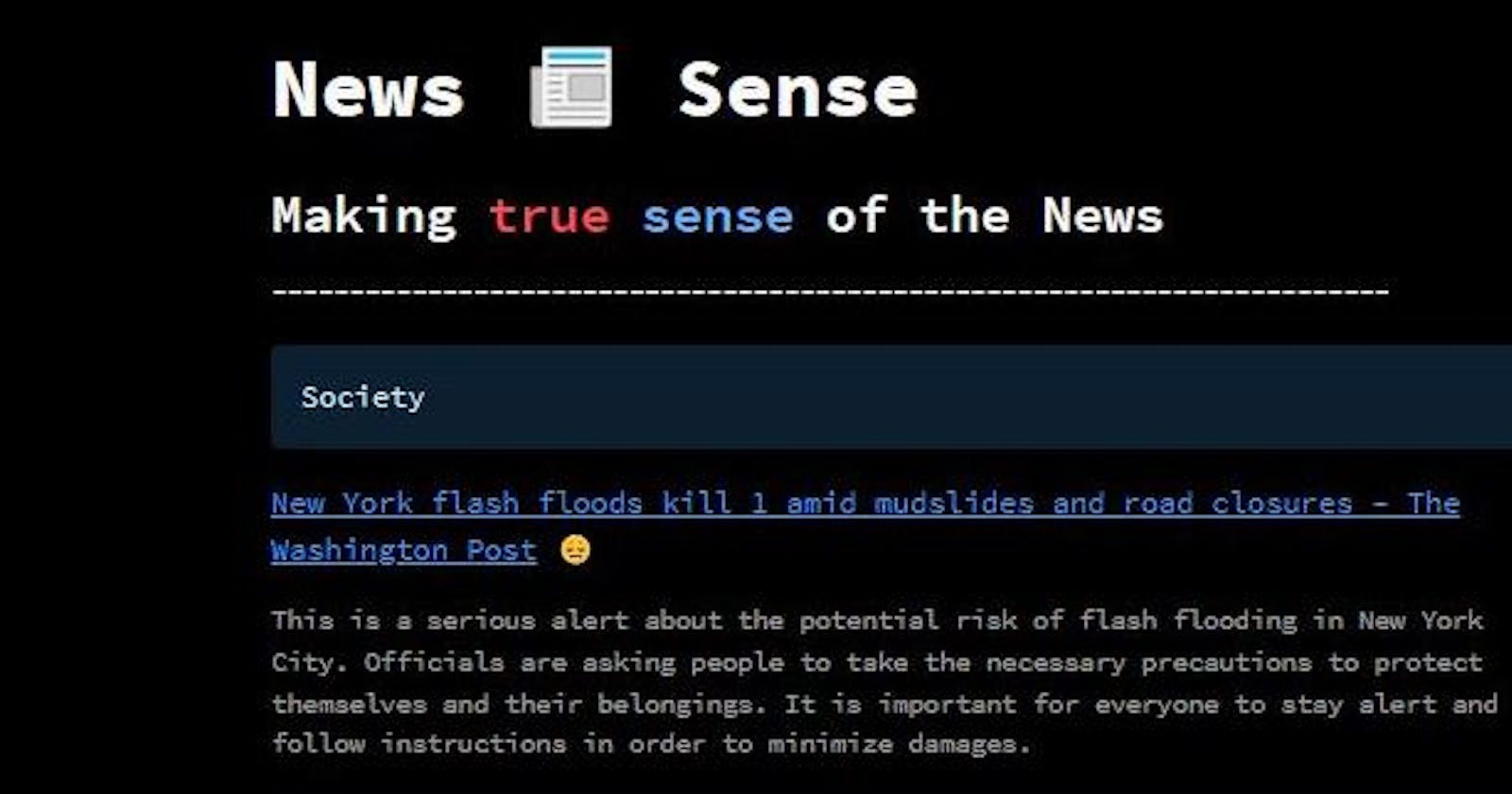Making sense of the news with GPT-3, NLTK, Python and Streamlit
With Sentiment Analysis, Summarization and Categorization
ChatGPT buzz is all around and I was keen to use the GPT-3 API in a project. In this post I will walk through the process of creating a Python web app using Streamlit, called "News 📰 Sense." The app fetches top news articles from the News API, generate summaries of each article using the OpenAI GPT-3 model, analyze the sentiment of the article using the Natural Language Toolkit (NLTK) library, and classifies the articles into different categories based on keywords.
Understanding Sentiment Analysis
Sentiment analysis is a natural language processing (NLP) technique used to determine the sentiment or emotion expressed in a piece of text. It aims to understand whether the text conveys a positive, negative, or neutral sentiment. For my project I used the VADER (Valence Aware Dictionary and sEntiment Reasoner) lexicon from the NLTK library.
The VADER lexicon contains a list of words and their associated sentiment scores. It takes into account the intensity of the sentiment words and the context in which they appear to provide a compound sentiment score. A positive (pos) score indicates a positive sentiment, a negative (neg) score indicates a negative sentiment, and a score close to zero suggests a neutral (neu) sentiment.
Categorizing News Articles
Categorizing news articles helps in organizing and presenting information effectively. In my app, I classify each article into predefined categories, such as Business, Technology, Sports, Entertainment, Politics, and Society. To achieve this, I created a list of keywords associated with each category. In the code I checked if any of these keywords are present in the article content, and if so, assigned the article to the corresponding category.
Summarizing News Articles with GPT-3
Summarization is the process of condensing a longer piece of text into a shorter, concise version that captures the essential information. For summarizing news articles, I used the OpenAI GPT-3 DaVinci, a powerful language generation model that can generate human-like text. Shameless admission: Using GPT was the main draw for this project :)
GPT-3 works by taking a prompt (the news article content in our case) and generating a continuation or summary based on that prompt. We specify the maximum number of tokens for the summary to control its length. The GPT-3 model is fine-tuned to understand context and generate coherent and contextually relevant summaries.
The application
You can find the code for News 📰 Sense and instructions to use it at https://github.com/tanmaychk/News-Sense. Before starting, make sure you have the following:
Python installed on your system
An API key from the News API. You can sign up and get your API key from here.
An API key from OpenAI GPT-3. You can obtain your API key from OpenAI.
What have been the Learnings
As a developer, this project allowed me to apply various NLP concepts and technologies in a practical and meaningful way:
API Integration: how to integrate external APIs like the News API and OpenAI GPT-3 API into Python code to access real-time news data and perform advanced language generation.
Natural Language Processing (NLP): By utilizing the NLTK library, gained insights into how NLP techniques like sentiment analysis and tokenization work. I also understood how the VADER lexicon is used to determine the sentiment of text.
Machine Learning for Language Generation: experimented with OpenAI GPT-3, a state-of-the-art language model capable of generating human-like text. I utilized it to summarize news articles, demonstrating the power of machine learning in language tasks.
Text Classification: applied text classification to categorize news articles based on specific keywords. This demonstrated how NLP techniques can be used for content organization and user-friendly presentation.
Streamlit Web App Development: I had used Streamlit earlier as well, in another project. Streamlit's simplicity allows us to focus on functionality and visualization rather than dealing with web development complexities.
Further Steps
The News Sense app can perhaps be further enhanced by incorporating user input for customized news filtering, improving summarization techniques, or integrating more advanced language models. I will implement them, when I get time.
It was a joy working on the project, hope you liked it as well.
